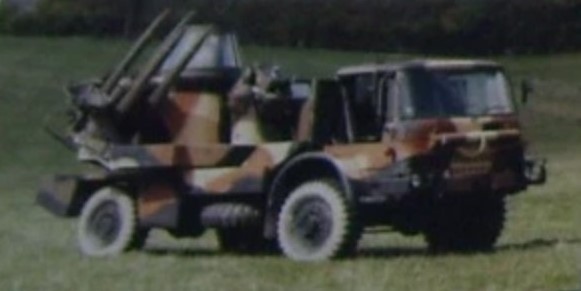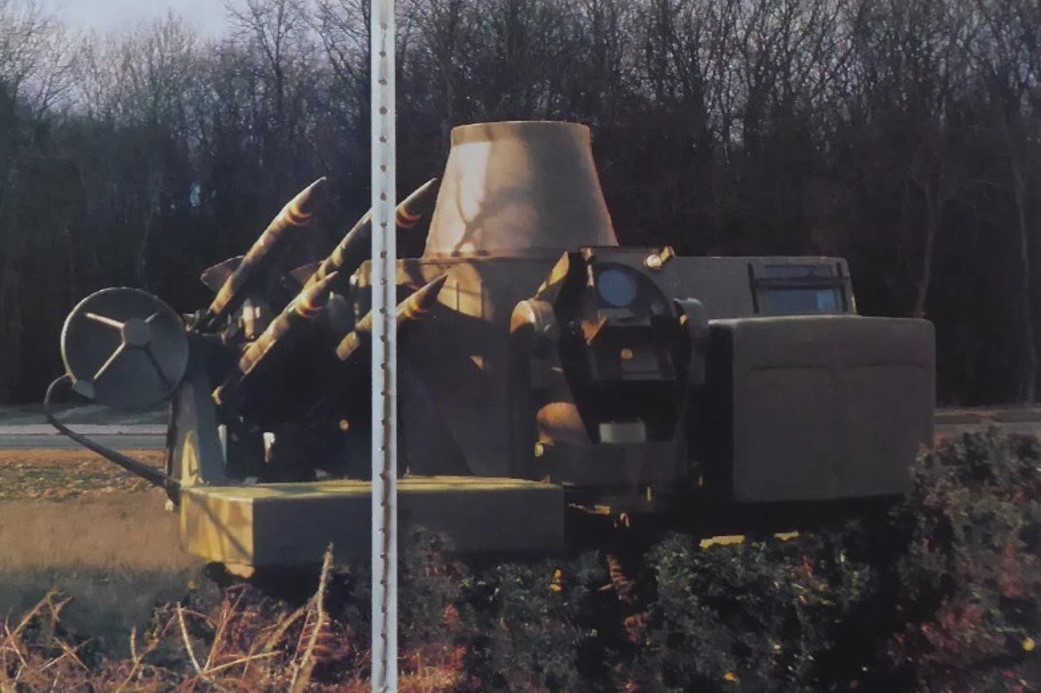- Yes
- No
-Credit to the guys at Vauxpedia for this pic
Introduction
The Rapier missile system, developed by British Aerospace, is a versatile, mobile, surface-to-air missile (SAM) system designed to provide low-altitude air defense against aircraft and helicopters. Originally developed in the 1970s and continually upgraded, the Rapier system became a core component of British and allied air defense forces. Its primary role is point defence against low-flying aircraft. The system’s early versions were static and ground-based, but later models were mounted on mobile platforms, enabling rapid deployment. The base Rapier model has been deployed for a variety of situations, from defending RAF airfields in active combat zones, to providing air cover for domestic events such as the London Olympics or the G7 Summit.
The Rapier Laserfire variant, a significant upgrade, was developed in the 1980s. Mounted on a modified Bedford MK 4x4 truck chassis, with plans for a mounting on the Stormer APC, the Laserfire features a combination of surveillance radar and an automatic laser tracker. These components enable quick target acquisition and tracking, even in adverse weather or low-visibility conditions. The Laserfire is equipped with a Plessey surveillance radar, which integrates electronic counter-countermeasures (ECCM) to minimize jamming interference, and a thermal imaging tracker for day and night operations. It is also capable of firing Rapier Mk 1 and Mk 2 missiles.
The system can be operated remotely by its crew, or with a two-man crew within a cabin on the launcher. The cab of the Bedford 4x4 chassis has been modified to be able to fold down while firing, improving detection and launching angles for the system, but the system will be functional with the cab erected, with slightly reduced firing angles frontally.
The system was a private venture, with hopes of securing export contracts, particularly with clients in the Middle East. 6 prototype/pre-production units were built, and reportedly 2 production standard units, in order to partially fulfill any potential orders immediately. It was tested extensively over a 5 week period in 1988, including firing trials against towed targets and simulated hovering helicopters, as well as exhaustive mobility trials over adverse terrain. The system performed well, and met or exceeded the expected performance targets. However, as was the case with many British products at the time, relationships with potential export customers were rocky and marketing was poor, and as a result little interest was was shown in the system, and it did not enter mass production.
Specifications
Spoiler
Fire Control
Plessey surveillance radar (6399.159) with all-weather capability.
Ferranti Type 629 millimetric wave laser tracker with automatic acquisition of target data
Automatic thermal imager tracker with manual acquisition options
Gyrostabilized tracker
Rapier Mk 1

Chassis
Images
Sources
Spoiler
Vauxpedia for the colour pics. Incredibly helpful guys.
Stormer Rapier Laserfire Brochure (available here - credit to Terik for this one)
Jane’s Land Based Air Defence 1994-95 (available here)
Jane’s Land Based Air Defence 1989-90 p.143 (available here)
Jane’s Defence Weekly 1989 Volume 12 Issue 5 (available here)
Jane’s Weapon Systems 1988-89 p.185 (available here)









